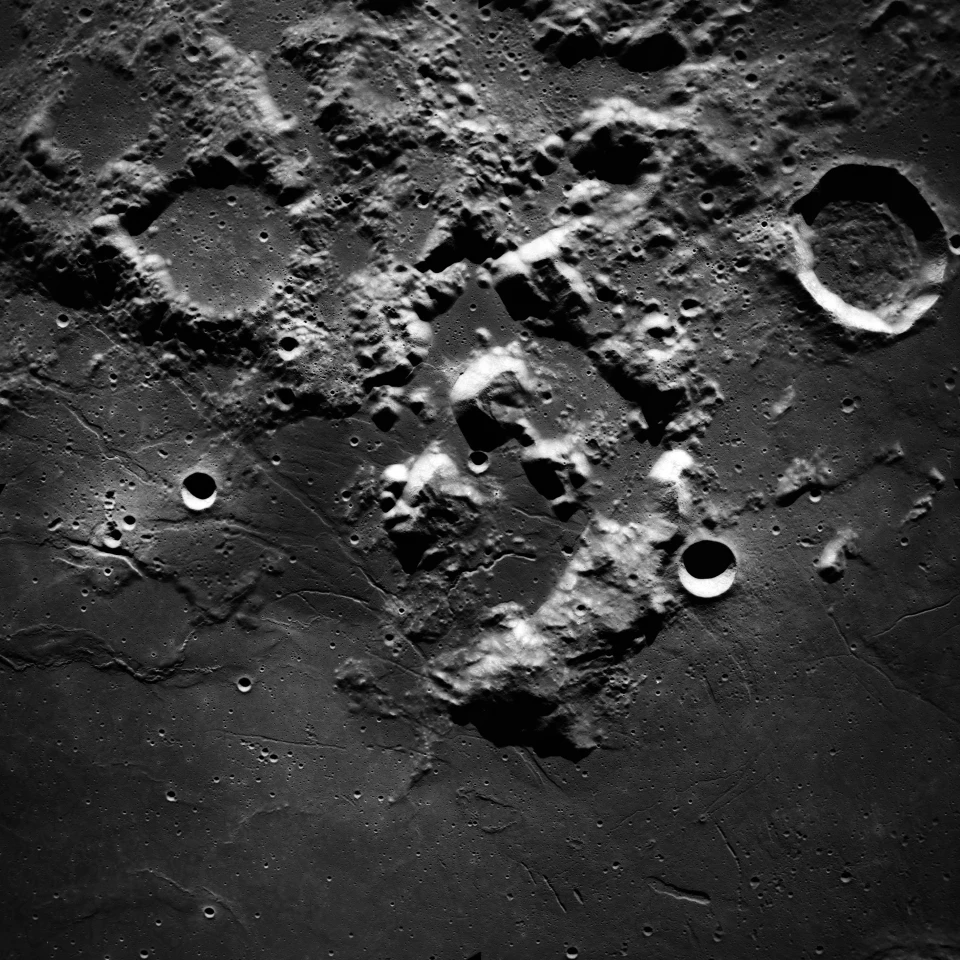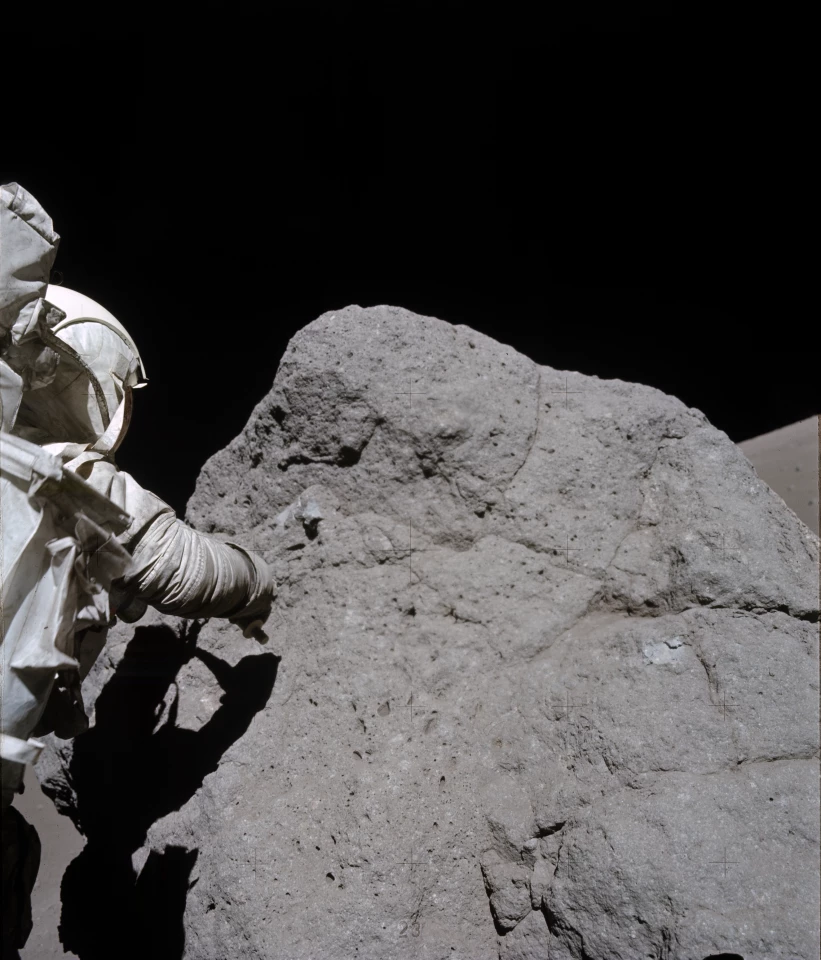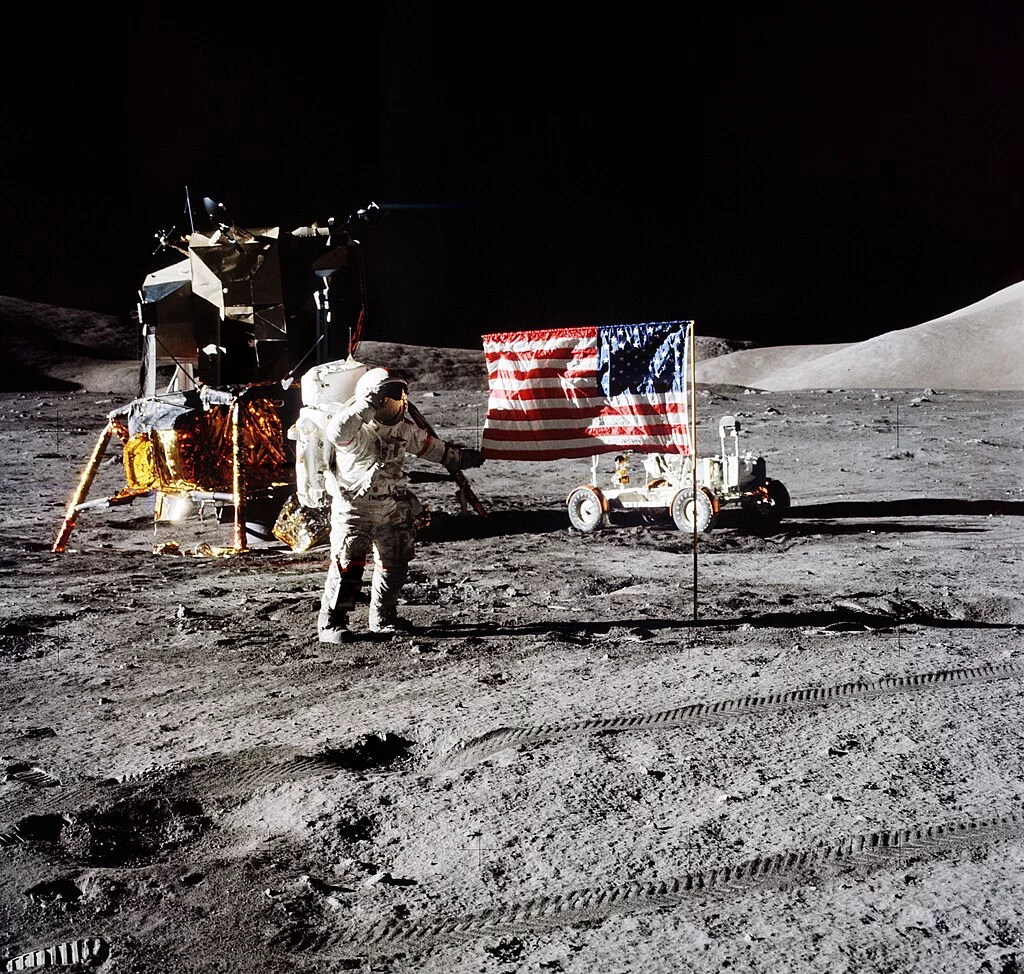As if hard vacuum, intense cosmic radiation, corrosive dust, meteors, and temperatures whiplashing hundreds of degrees between night and day weren't enough, personnel at future Moon bases will be at significant peril from moonquakes.
If you watch enough science fiction, you might be under the impression that the main threats to a Moon base would be hostile flying saucers launching attacks and highly improbable cat women, with meteor showers thrown in for variety. Now, according to a team of scientists led by Smithsonian Senior Scientist Emeritus Thomas R. Watters at the University of Maryland, we can add moonquake to the headaches facing future base commanders.
This new bit of bad news is based on an assessment made from data brought back by the Apollo 17 astronauts, who touched down in the Taurus-Littrow valley, which is located on the southeastern edge of Mare Serenitatis, in December 1972. This rugged, mountainous area was chosen for the last of the US Apollo Moon landing missions because of its geology and the possibilities to maximize the scientific findings brought back by astronauts Eugene Cernan and Harrison Schmitt.

Though all six of the Apollo landing missions left behind instrument packages that included seismographs, these were of very limited capability and all were switched off in 1977 as their nuclear power sources began to fail. As a result, our understanding of the geological activity, and quakes in particular, on the Moon is very limited.
Because of this, the Maryland team turned to other clues to learn more about lunar seismic activity. Specifically, they looked at samples from boulder falls and landslides collected by the astronauts at Taurus-Littrow. What they found was that falls and slides were the result of ground motions caused by quakes rather than large meteor strikes, which were too rare to produce the needed shock waves.
These quakes occurred over a period of 90 million years and had a force of about 3.0 on the Richter Scale. On Earth, this would be a very mild quake that might be felt, but would be highly unlikely to cause any damage. On the Moon, especially if it was a shallow quake, it would have more of an impact.

Aside from telling scientists more about the Moon's small yet still present geological activity due to its ongoing contraction, these findings show that there is a large enough hazard of damaging human outposts on the Moon that it will need to be kept in mind by planners.
The danger isn't exactly high probability. On any given day, the odds of being hit by a moonquake are about 20 million to one, but for a base set up on the long term, this drops to 5,500 to one over the course of a year and shortens further the longer you're there. And then there's the design of future landers, which tend to be tall and top heavy and would be prone to toppling if the ground shakes – as has been seen with recent robotic landers.
The team admits that this is based on thin data, but they feel that lunar orbiters with high-resolution cameras and new seismic stations set up as part of the Artemis program will help to fill those knowledge gaps.
"We want to make sure that our exploration of the moon is done safely and that investments are made in a way that’s carefully thought out,” said University of Maryland Associate Professor of Geology Nicholas Schmerr. "The conclusion we came to is: don’t build right on top of a scarp, or recently active fault. The farther away from a scarp, the lesser the hazard."
The research was published in Science Advances.
Source: University of Maryland







